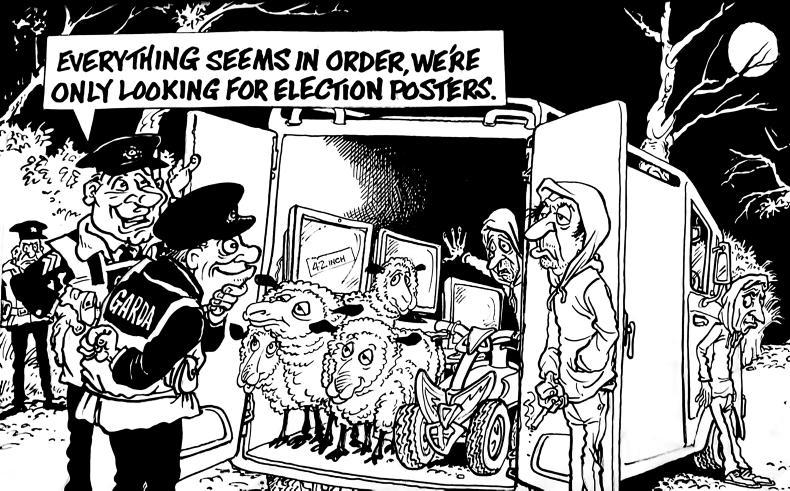It’s not very often that the sheep sector gets a jolt that would make even the most enduring of farmers sit up straight. This week sheep farmers got a number of such shocks.
The first came on Monday night at the IFA sheep price meeting in Athlone when the Teagasc sheep leader Michael Gottstein showed the 2022 net margin per ewe, before a labour charge for the farmer is included, was €7 per ewe down from €39 per ewe the year previous.
What’s alarming about this is that it includes a market lamb price rise from about €5.20/kg in 2020 to an average of around €6.70/kg over the last two years. Remember, in relative terms 2021 was a very good year for the sheep sector as output prices had increased and the full brunt of cost increases had not taken hold. However, we can now clearly see the lamb price rise from 2020 is not enough to cover the farm inflation costs.
Fuelled by high global energy costs, the on-farm costs for sheep farmers associated with making hay or silage and buying fertiliser, concentrate and fuel is simply eroding all the market price increase.
Three years ago if you had offered midseason-lambing farmers €150 each for lambs and told them any cull ewes would be making over €150, they would have taken your hand off for it. These farmers are now getting very close to this in terms of returns, and they are still no better off. It’s hard to believe, but it’s the sad reality.
A second shock also came in Monday’s meeting when projections presented showed a forecast that 2023 would be similar to 2022. Lamb prices are to remain static despite higher input costs – meal costs will be up and maybe fuel down a touch. However, assuming a relatively steady market, the margin for the farmer is next to nothing, and 2023 is looking like another difficult year.
Difficult message to deliver
It’s not an easy message to deliver to farmers. It’s not very positive and proactive, which a lot of farmers in the sector are, but there is no point in brushing it under the carpet. The facts are the facts, and processors, retailers and the farmers need to meet the challenge head on. Farmers must scrutinise every cost and really question the returns on the big costs and purchases.
The factories also have a role and this leads to the third shock that sent ripples through the industry on Tuesday. After almost 10 years of speculation, the reports that Dawn Meats is set to take over the privately owned Kildare Chilling really got sheep farmers talking.

If we look back over the last two years, Kildare Chilling, while maybe not the biggest of the processors, has led lamb price quotes for 90% of the time, ahead of the other main players in the industry – ABP, Kepak and Dawn. Farmers can’t or won’t stand in the way of industry consolidation if it means economies of scale and potentially allowing processors lock in and develop new routes to market.
Dawn is stepping into big shoes as Thomas McParland’s Kildare Chilling has long shown its adaptability and flexibility to target new markets in Nordic countries and also explore markets outside of Europe. In the past this has allowed Kildare be the pacesetter, week to week on lamb price, negotiating with sheep producer groups from Donegal to Kerry and everywhere in between.
Time will tell if Dawn can match or improve on the Kildare Chilling track record.
Challenge
Dawn Meats is taking on the challenge at a time when the broader livestock sector is being forced by new environmental initiatives and policies to look at every other option (forestry, organics, renewables etc) except put more ewes in lamb.
As one hill sheep farmer said to me this week – “I would be better off not putting the ewes in lamb and get my €300/ha organic payment on top of the new CAP payment.” Costs drop to the floor. Output drops to the floor.
Dawn Meats won’t get much of a crack out of that farmer. We can’t let spin and positive environmental vibes cloud on-farm economic reality.
Are the blind leading the blind and are our minister and Government prepared to let this great industry wither much like the suckler sector with little or no support?






 This is a subscriber-only article
This is a subscriber-only article










SHARING OPTIONS: